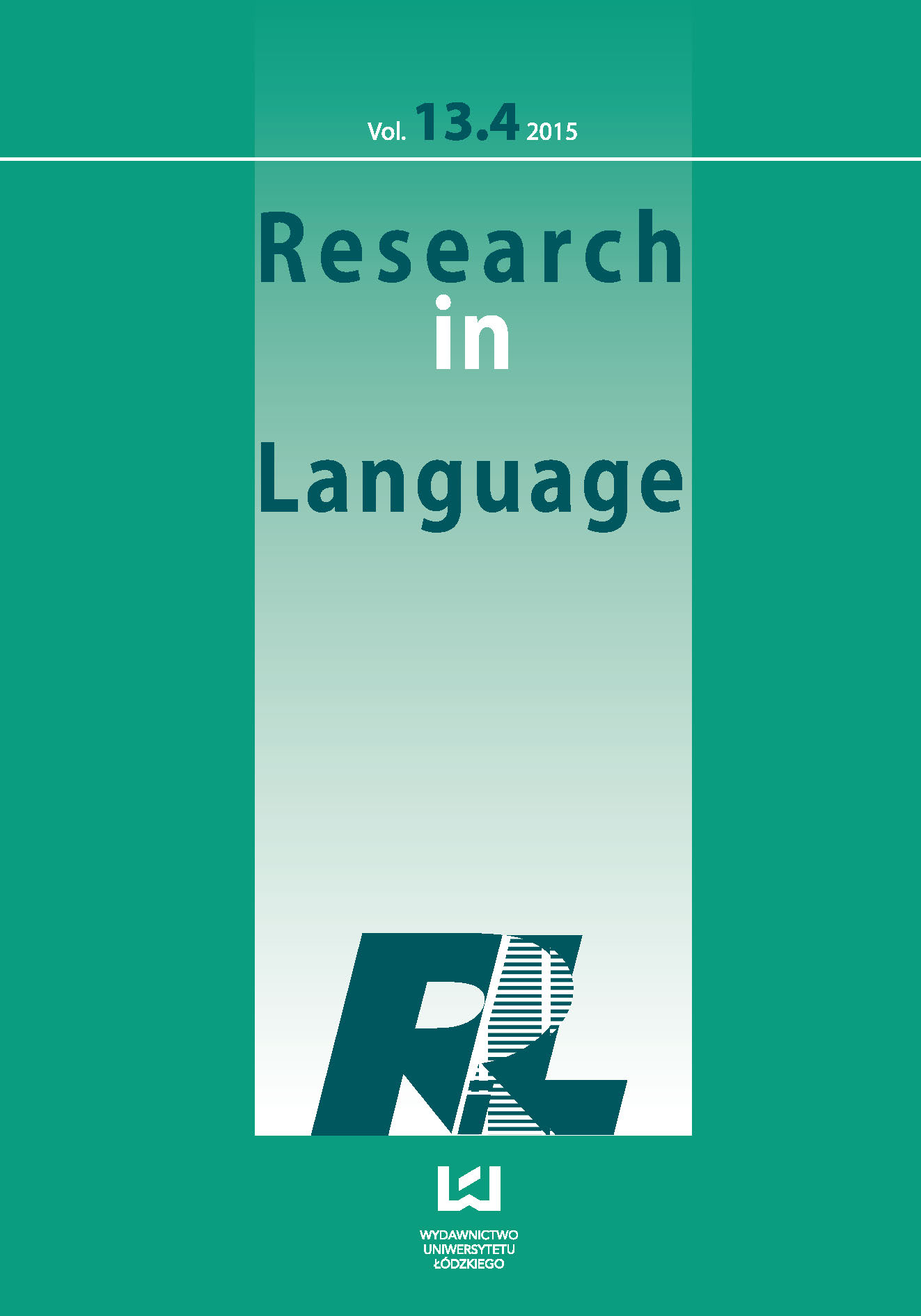Classifier constructions as procedural referring expressions in American Sign Language
DOI:
https://doi.org/10.1515/rela-2015-0032Keywords:
American Sign Language, classifier constructions, ad hoc conceptsAbstract
The present paper comments on signs of American Sign Language in the perspective of relevance theory. The main claim is that classifiers encode procedural instructions to help the addressee pick out the intended referent for the procedural referring expressions made with classifier constructions. The author explains how three classes of classifiers differently manipulate concepts to instruct the addressee to create ad hoc concepts though the use of inference, narrowing, and broadening. It is also claimed that classifier constructions do not encode a conceptual meaning, but a procedural instruction. The discussion includes illustrations of how the speaker’s using classifier constructions instead of lexical signs may increase the number of cognitive effects on the part of the addressee.
References
ASLTA Conference, American Sign Language Teachers Association & CSD-TV. 2007. ASL poetry [Motion picture]. United States: American Sign Language Teachers Association.
Google Scholar
Bruce, T. (2003). The hearing world around me [Motion picture]. TrixBruce.com. Seattle, WA.
Google Scholar
Christie, K. L., & Durr, P. (2009). Ella Mae Lentz visionary & ASL poet [Motion picture]. United States: National Technical Institute for the Deaf.
Google Scholar
DawnSignPress. (1992). Signing naturally. Level 2. Student videotext [Motion picture]. Berkley, CA: Dawn Sign Press.
Google Scholar
Hedley, P. (2005). Procedures, pronouns and relevance theory. Durham and Newcastle Working Papers in Linguistics, 11, 41-55.
Google Scholar
Jones, S. P. (2013). Classifier constructions as procedural signs in American Sign Language (M. A. thesis). The University of North Dakota, United States, North Dakota. http://search.proquest.com.ezproxy.rit.edu/docview/1418768900/abstract?accountid=108 (1 September, 2014).
Google Scholar
Klima, E. S., & Bellugi, U. (1979). The signs of language. Cambridge, Mass.: Harvard University Press.
Google Scholar
Liddell, S. (2003). Sources of meaning in ASL classifier predicates. In K. Emmorey (Ed.), Perspectives on classifier constructions in sign language. Mahwah, N.J.: Lawrence Erlbaum Associates.
Google Scholar
Liddell, S. K. (2003). Grammar, gesture, and meaning in American Sign Language. Cambridge, New York: Cambridge University Press.
Google Scholar
Padden, C. (1988). Images of language [Motion picture]. United States: RIT/NTID.
Google Scholar
Sandler, W., & Lillo-Martin, D. C. (2006). Sign language and linguistic universals. Cambridge, UK: Cambridge University Press.
Google Scholar
Schick, B. S. (1987). The acquisition of classifier predicates in American Sign Language (Unpublished doctoral dissertation?). Purdue University, Indiana.
Google Scholar
Supalla, T. R. (1982). Structure and Acquisition of Verbs of Motion and Location in American Sign Language (Unpublished doctoral dissertation?). California: University of California, San Diego.
Google Scholar
Sutton, V. (2009). SignWriting. (1st ed.). La Jolla, CA: Center for Sutton Movement Writing, Inc.
Google Scholar
Sutton, V, Frost, A. Center for Sutton Movement Writing & Deaf Action Committee for SignWriting. (2011). SignWriting hand symbols. La Jolla, CA: The SignWriting Press.
Google Scholar
Valli, C., Lucas, C., Mulrooney K. J., & Rankin, M. N. P. (2011). Linguistics of American Sign Language: an introduction. (5th ed). Washington, D.C.: Gallaudet University Press.
Google Scholar
Wilson, D. (2011). Conceptual-Procedural Distinction: Past, Present and Future. In M. V. Escandell Vidal, M. Leonetti Jungl & A. Ahern (Eds.), Procedural meaning: problems and perspectives. Bingley, UK: Emerald.
Google Scholar
Wilson, D., & Sperber, D. (2012). Meaning and relevance. Cambridge, New York: Cambridge University Press.
Google Scholar










